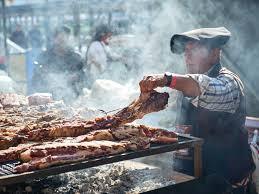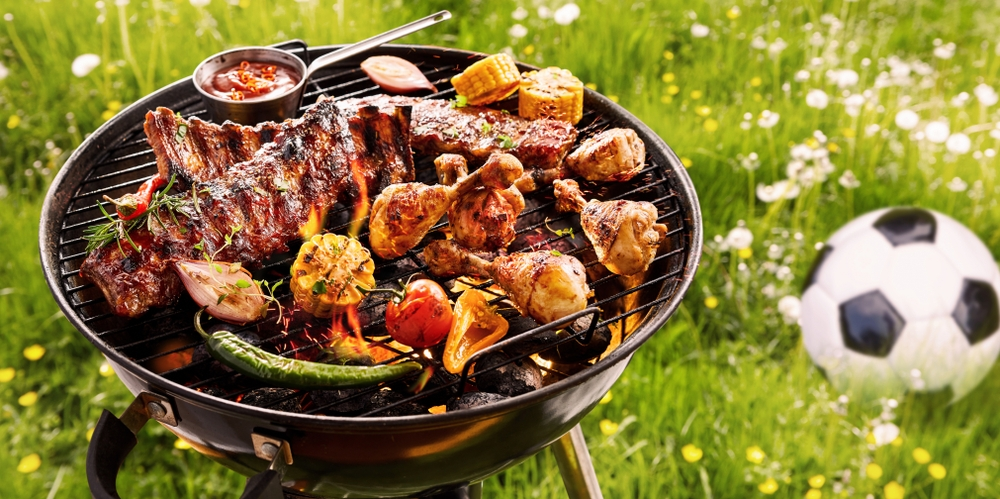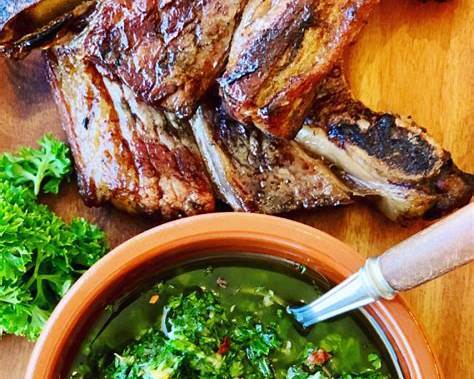What makes Argentinian Asado different from American BBQ
Grilling over an open flame has become more than just a cooking method — it’s now a global movement. Across the U.S. and Canada, barbecue enthusiasts are exploring new styles that go beyond the traditional smoker or gas grill. Among them, Argentinian asado stands out for its precision, simplicity, and cultural depth. But what exactly makes it different from American BBQ, and why are more people abroad adopting its techniques?

What is Argentinian Asado?
An asado is far more than a meal — it’s a methodical approach to grilling centered around fire control, timing, and quality ingredients. In Argentina and Uruguay, the word asado refers both to the cooking technique and to the social gathering around it. Instead of marinades or heavy sauces, the flavor comes from the wood or charcoal used and the natural fat of the meat as it slowly cooks. The result is tender, smoky, and deeply savory — a true expression of craftsmanship through simplicity.
Argentinian Asado vs. American BBQ: the main differences


Although both traditions revolve around fire and meat, Argentinian asado and American BBQ follow very different philosophies. The main difference lies in the heat source and cooking style. American barbecue typically uses a closed smoker or grill, cooking meat “low and slow” with indirect heat and plenty of smoke. Argentinian asado, on the other hand, is an open-flame technique where the cook — the asador — carefully manages the embers to achieve even heat without flames touching the meat.
Where American BBQ relies on marinades, rubs, and sauces, asado celebrates simplicity. The meat is seasoned only with coarse salt (sal parrillera) and sometimes brushed with chimichurri or salsa criolla once it’s cooked. The emphasis is on highlighting the natural flavor and texture of the beef — something deeply rooted in Argentina’s ranching culture.
Another key contrast is the social rhythm. In the U.S., barbecue often fits into a specific event or time slot — a weekend gathering or game-day cookout. In Argentina, an asado unfolds slowly, guided by conversation as much as by temperature. There’s no rush; the process is as important as the result. The asador becomes both chef and host, reading the fire and the guests in equal measure.
What you need to make an authentic Argentinian Asado



Recreating an Argentinian asado abroad isn’t about replicating every detail — it’s about capturing the essence of cooking over fire with patience and precision. To achieve that, you’ll need a few key tools, ingredients, and the right mindset.
Essential tools for an Argentinian-Style Grill
The foundation of every asado is the parrilla — a simple but sturdy grill that allows you to control the distance between the embers and the meat. A small brasero (firebox) is often used to generate hot coals continuously, feeding them gradually under the grill. Long metal tongs (pinzas), a shovel for the coals, and a heavy wooden board for cutting are also part of the setup. And of course, a sharp knife — ideally one made in Argentina — is non-negotiable for any asador.
Typical meats and seasonings
An authentic asado usually starts with chorizos y morcillas (sausages and blood sausages), followed by cuts like asado de tira (short ribs), vacío (flank steak), and entraña (skirt steak). Some also include achuras — organ meats such as sweetbreads (mollejas) or kidneys. The secret is in simplicity: just coarse salt before grilling. Sauces like chimichurri o salsa criolla are served on the side, not used as marinades.
Sides and drinks that complete the experience
A true asado isn’t complete without its accompaniments. Fresh salads, crusty bread, and grilled provoleta (a disc of provolone cheese seasoned with oregano and chili flakes) are staples. The drink of choice is typically a robust red wine — often Malbec — though many opt for a cold fernet con coca to start the afternoon.
How to recreate the experience in the U.S. or Canada
Bringing the Argentinian asado experience to North America is easier than most people think. The key isn’t just in the equipment — it’s in understanding the rhythm and respect for the process. You don’t rush an asado; you build it. Start by choosing an open grill that allows for ember control, or use a kettle-style grill with the lid off to simulate the open fire effect. Hardwood charcoal or lump wood provides a similar aroma to traditional Argentine woods like quebracho or espinillo.
If you can’t find the same cuts, go for local equivalents: flank steak for vacío, short ribs for asado de tira, or skirt steak for entraña. The goal is to achieve a slow sear with crispy edges and juicy interiors — not smoky, just perfectly grilled. A sprinkle of coarse salt before cooking is all you need.
Where to get everything you need for an Argentinian Asado in North America
Recreating an authentic asado starts with having the right tools and ingredients — and that’s often the hardest part when you’re outside Argentina or Uruguay. Finding real chimichurri, sal parrillera, or proper asado de tira cuts can be challenging in local stores.
Find everything you need for an authentic Argentinian asado at Pampa Directa, with free shipping to the United States. At pampadirect.com you’ll discover over 10,000 products from Argentina and Uruguay — from dulce de leche, alfajores, yerba mate, and grilling accessories, to sports apparel, kitchen tools, vinyls, and more. Place your order today and receive it within 3 to 7 business days. We deliver to 80+ countries including U.S, Canada, Australia, Germany, Israel, Italy, France, China, and many others.
Finally, remember that asado is as much about community as it is about flavor. Invite friends, take your time, and make the fire part of the experience. Play some music, pour a glass of wine, and let the grill set the pace — that’s the real Argentinian way.
Publicaciones recientes
-
Armá tu mesa navideña con productos argentinos con envíos a todo el mundo
Se acercan las fiestas y, si sos argentino viviendo en el exterior, no tenés por qué dejar de lado l …4th Dec 2025 -
Set your holiday table with classic Argentine products with worldwide shipping
The holidays are coming up fast, and if you’re Argentine and living abroad, you don’t have to settle …2nd Dec 2025 -
Pan de miga en Estados Unidos y Canadá: cómo conseguirlo para hacer sándwiches de miga con envío internacional
El pan de miga (también conocido como pan sin corteza o pan para sándwiches finos) es la base del sá …27th Nov 2025
